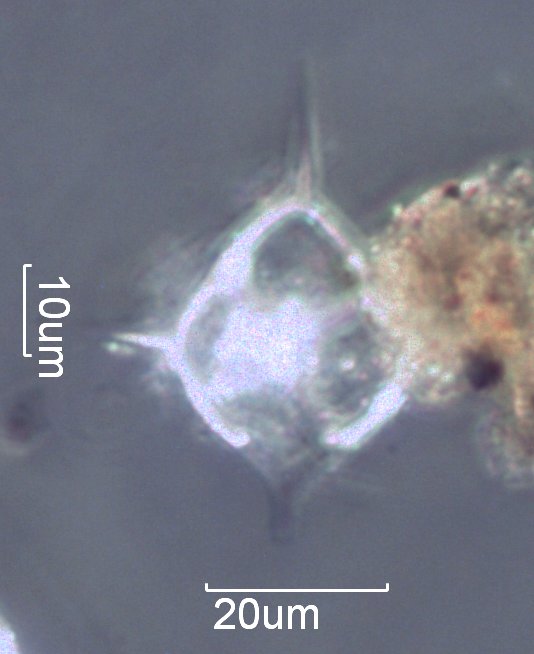Freshwater Silicoflagellate
This is from an environmental tapelift collected in a home.
Reflected Darkfield Illumination
http://www.microscopy-uk.org.uk/mag/indexmag.html?http://www.microscopy-uk.org.uk/mag/artjul07/rc-silicoflag.html
Definition/Function:
Silicoflagellates are amoung the group of life forms that make up the phytoplankton. Their cast (seen here) is an opaline silica and they are often encountered in diatomaeous earth deposits. Silicoflagellates tend to be marine, autotrophic flagellates producing their own food through photosynthesis. Many of the species are very sensitive to temperature and so become important indicators of paleoclimates in fossil deposits.Significance in the Environment:
Silicoflagellates are often found in diatomaous earth deposits and aid in the characterization of the conditions under which the deposit formed. Near the ocean they are found in surface deposits as a result of ocean sprayCharacteristic Features:
Silicoflagellates are characterized by a basal ring with extending spines. Some species have elaborate domes extending from one surface of the basal ring, which results in a hemispherical asymmetry. They are typically 20 to 50 micrometers in diameter but some may be as large at 100 micrometers. The structure is isotropic silica and so is dark between crossed polarizing filters. The Distephanus genus has a apical (central) window.Associated Particles:
References:
Haq, Bilal U. and Anne Boersma, INTRODUCTION TO MARINE MICROPALEONTOLOGY, Elsevier, pp. 267-273, 1978 (ISBN 0-444-00267-7)http://www.microscopy-uk.org.uk/mag/indexmag.html?http://www.microscopy-uk.org.uk/mag/artjul07/rc-silicoflag.html


